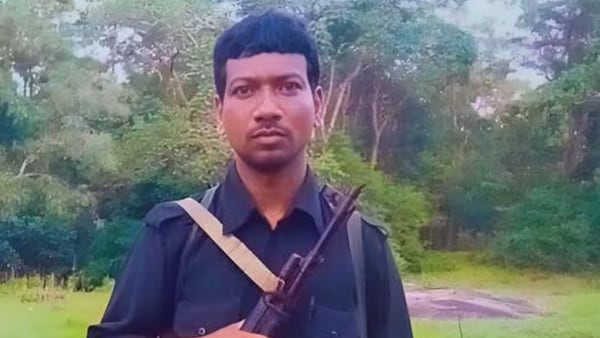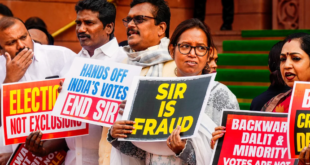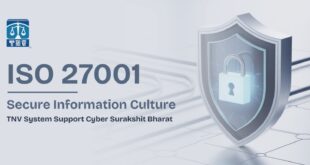 Dr. Utkarsh Sinha
Dr. Utkarsh Sinha
Madvi Hidma, a multi-crore bounty on the state, the mastermind of numerous deadly attacks, and a symbol of armed insurgency, is being hailed by security agencies as a “decisive success.” Meanwhile, a segment of the tribal community and some intellectuals within and outside the Bastar belt view him not just as a criminal but also as a “symbol of resistance” against state and corporate exploitation.
This dichotomy has transformed Hidma’s death from being merely an operation, but into a larger ideological and moral question about who defines violence and state violence.
Why the sympathy of tribal intellectuals?
The sympathy for Hidma appears to be rooted in two aspects: one, the decades-long struggle for tribal rights, control over forest land and mineral resources, in which the state is often seen as complicit in the displacement of communities in the name of mining, large-scale projects, and security. Second, experiences such as fake encounters, forced arrests, and lack of access to the judicial system in police operations have given rise to deep distrust of the government.

In such an environment, when a tribal youth like Hidma reaches the central committee of an organization and speaks the language of “resistance” with a gun, a section of society, while disregarding his actions, views his choices as “forced politics,” not merely criminal tendencies.
What will security operations alone achieve?
In recent years, many states, including Chhattisgarh, have intensified security operations, increased the deployment of special forces, and attempted to dismantle the Naxalite network through strategies like “Operation Kagar.” This has led to a reduction in the number of attacks and the geographical extent of affected districts, but the question remains: is this also eliminating the ideology and social base of Naxalism or merely suppressing it?
Security operations may be essential to curb violence, but unless concrete and credible reforms are seen on issues such as land acquisition, forest rights, employment, language, culture, and access to justice, discontent persists even after the guns fall silent, and the next generation searches for a new “Hidma.”
State Policies: Two Paths, Two Risks
In recent years, several governments, including Chhattisgarh, have adopted policies of tough military action, while simultaneously embracing surrender, rehabilitation, and dialogue.
Under the “Naxal Surrender/Victim Relief and Rehabilitation Policy 2025,” financial assistance, education, and employment opportunities have been announced for surrender victims. Even at the Chief Minister’s level, the message is being conveyed that the Naxalite problem cannot be solved solely through weapons, but through dialogue and trust.
This dual approach offers both opportunity and risk. If security operations are balanced with the promise of development and rights protection, it can provide a path out of violence; But if the development discourse remains mere rhetoric and the people’s experiences on the ground are limited to “army and files,” military pressure will only create new divides rather than break new ground.
The Roots of Naxalism: Not Just a Story of Guns
Most Naxal-affected areas are tribal-dominated, rich in natural resources, but lagging behind in human development indices. Access to education, health, roads, communications, and the judicial system is poor here; mining, dam, and industrial projects are often carried out without adequate rehabilitation and consent, and the implementation of provisions like Gram Sabha, PESA, and the Forest Rights Act has been incomplete or selective.
In such an environment, Naxal organizations present themselves as “protectors” and “justice-giving forces,” while the state views them as “the biggest threat to internal security.” This is where the conflict becomes not just a struggle for guns and uniforms, but for legitimacy and moral authority.
Concerns Rising from a Divided Society’s Reaction
While celebrations and relief have been reported in many areas of Bastar following Hidma’s death, grief, questions, and protests are prevalent in some areas, suggesting a society deeply divided. Protests that reached Delhi, slogans raised on educational campuses, and heated debates on social media indicate that the “Naxalism versus the State” debate is no longer confined to the jungles but is also a subject of ideological conflict within the urban intelligentsia.
When a segment of society demands a judicial inquiry, a dignified funeral, and standards like “no fake encounters” for even a violent commander, it is essentially expressing its expectation of constitutional and equal justice from the state—even if its language may seem provocative or controversial.
Can the Debate Move in the Right Direction?
The ongoing debate over Hidma’s death faces two dangers: first, it is completely confined to the “security versus terror” frame, obscuring tribal discontent, development, and rights. Second, Hidma is made a “hero” without criticism or questioning, thereby moralizing violence and ignoring the suffering of the victimized security forces, villagers, and ordinary citizens.
A responsible public discourse must avoid both these extremes, recognizing that Naxalite violence cannot be an alternative to democratic politics, but that cloaking state violence, repression, or usurpation of power in the language of “national security” is equally dangerous.
Way Forward: Thought-provoking but Practical
If this debate truly aims to address the root of Naxalism, honest political and administrative action must be taken to address some fundamental questions.
 Jubilee Post News & Views
Jubilee Post News & Views





